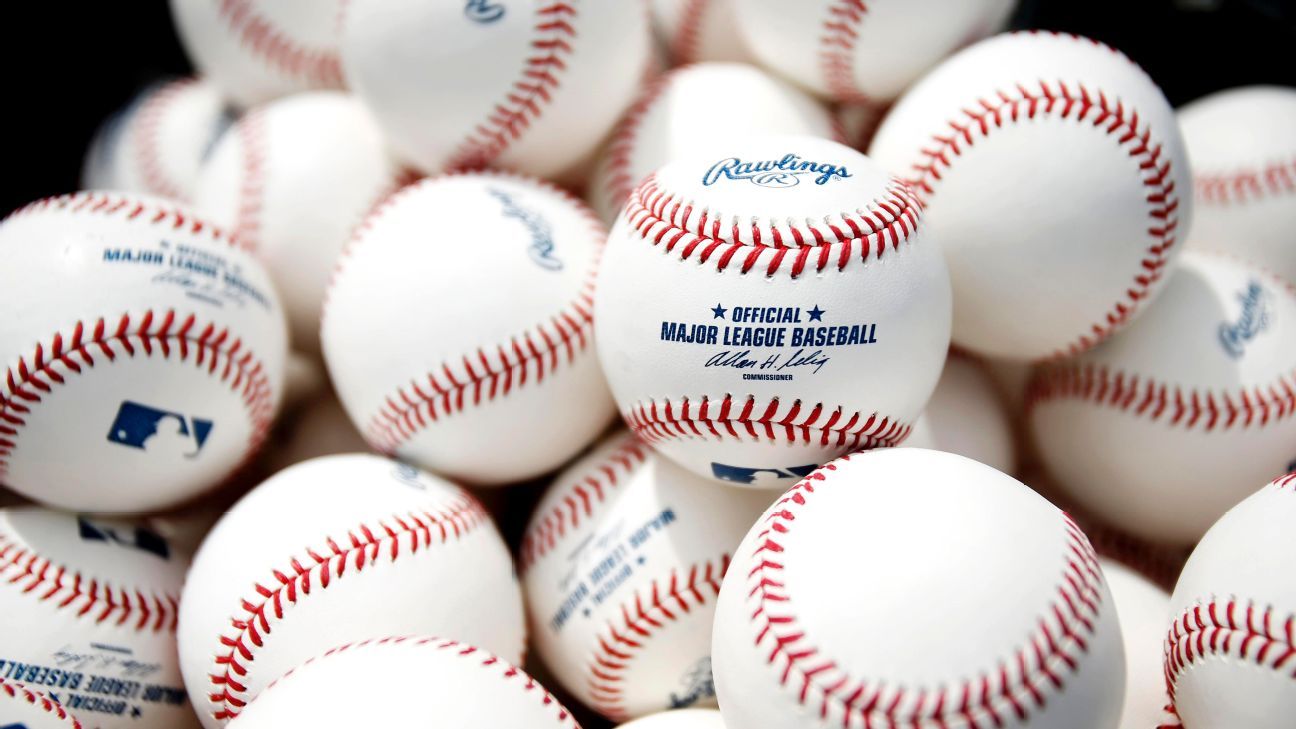Since its inception in 1965, the Major League Baseball draft has existed on a simple premise: Those who are chosen will sign. But a confluence of events has made 2021 ripe for players to at least consider the possibility of choosing college over the pros.
The combination of the NCAA’s new regulations on players monetizing their name, image and likeness, spread-out payments of signing bonuses due to an agreement between MLB and the MLB Players Association last year and the specter of a new collective-bargaining agreement friendlier to amateurs has given elite players leverage they haven’t possessed in past seasons.
Whether any player chooses to forgo signing will depend on organizations’ willingness to acknowledge that the climate for signing now is as unfriendly as it has ever been. At the same time, executives told ESPN that they believe the risks of passing up guaranteed money — even if it is delivered at a later date — makes it unlikely the best players will opt for college.
That premise could soon be challenged. With the top of the 2021 board still in flux leading up to the draft, which starts Sunday at 7 p.m. ET and will air on ESPN, players are weighing the prospect. It could be a college player returning to school or a high school player who slips beyond where he anticipated, but with the variance in bonuses assigned to each pick slot — the Pittsburgh Pirates have $8.4 million to spend on the top pick, while the Colorado Rockies get $5.2 million seven picks later — makes draft position matter. Teams can pay over slot for a player by spending less in later rounds — and they may have to, knowing what college now offers.
No longer does playing in college mean doing so simply for a scholarship. NIL rights offer players — particularly those who go to schools like Vanderbilt, which has built a strong brand as the college powerhouse and consistently brings in the country’s best recruiting classes — the opportunity to partner with companies that could enrich them. Whether it is baseball-card companies, NFT platforms or apparel outfitters, the possibilities for college athletes are now endless, and sources told ESPN the best college players could see million-dollar-plus paydays.
Considering the bonus structure in the 2021 draft, the allure is understandable. In March 2020, MLB and the union agreed on a system for the 2020 and 2021 drafts in which teams stagger payments on signing bonuses. The maximum upfront signing-bonus payment is $100,000. Up to 50% of the remaining bonus is due July 1, 2022, and the rest July 1, 2023.
By then, players from the 2022 draft will have received their full signing bonuses. Whether that incentive is strong enough to sway players to return to college will be clear by Aug. 1, the signing deadline for 2021 draftees.
With the expiration of the current collective-bargaining agreement on Dec. 1, MLB and the union could overhaul amateur-talent acquisition. Both sides expect bonus pools — the fixed amount of money each team is allotted in each draft — to grow. Further, agents have suggested the union push for the reinstatement of major league contracts for drafted players. Big league deals for amateurs, which would immediately place a player on a team’s 40-man roster, were abolished in the 2011 basic agreement.
The number of players to whom this scenario applies is admittedly limited to the top tier of players in the draft. Vanderbilt star Jack Leiter, for example, fits the proposition perfectly. He is a sophomore-eligible pitcher who, because of his profile playing in the SEC and on television more often than most, is well-known and seen as marketable. Beyond the NIL windfall he could reap, Leiter, because of his near-major-league-ready talent, would be a perfect candidate for a major league deal.
Leiter, who is expected to go early in the first of the draft’s 20 rounds, would take a significant gamble returning to Vanderbilt. Whether it’s the possibility of injury or ineffectiveness, or simply lost development time in a minor league system, a player who does not sign bets on himself — and that bet can fail spectacularly, as it did famously with Matt Harrington, who turned down a $4 million bonus in 2000, a $1.2 million bonus in 2001 and wound up spending his career in independent ball.
There are success stories, though. In 2012, right-hander Mark Appel returned to Stanford instead of signing with the Pirates after they chose him eighth overall. A year later, Appel went with the first pick in the draft and signed for nearly $3.5 million more than his 2012 slot figure. The more common path is for high school players not to sign. Whether it was now-Kansas City starter Brady Signer or Cincinnati Reds prospect Nick Lodolo, a gain of $3 million-plus by going to school isn’t farfetched.
In this draft are a pair of players who didn’t sign in 2018: UCLA shortstop Matt McLain, who was drafted by Arizona, and Ole Miss righty Gunnar Hoglund, who passed up on a deal after Pittsburgh selected him 36th. McLain is a potential top-10 pick, and Hoglund, even after undergoing Tommy John surgery this year, is expected to beat his previous draft position.
All is not lost for teams if they choose an early-round player who doesn’t sign. While they lose the benefit of having a player in their organization for a season of development, they would receive a pick in the 2022 draft one slot after where their unsigned pick was chosen the previous year.
